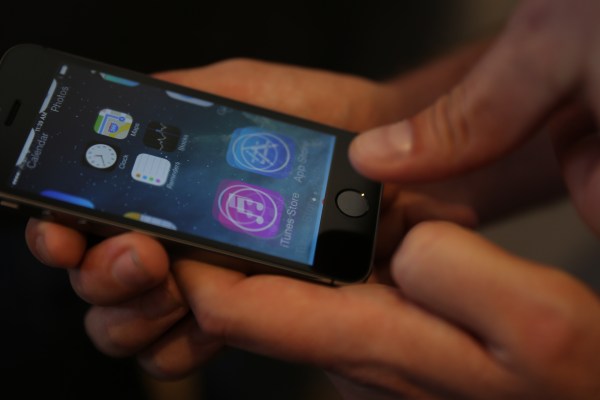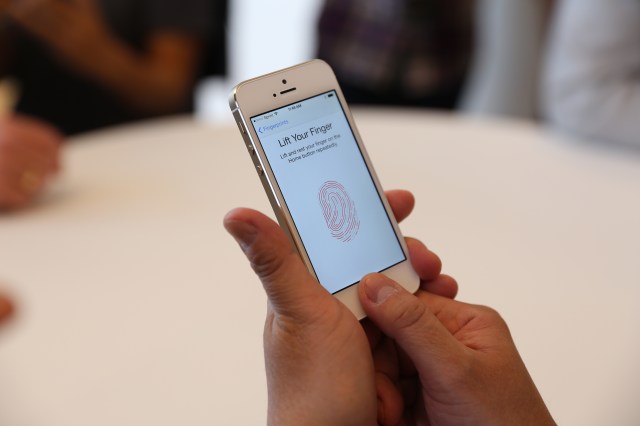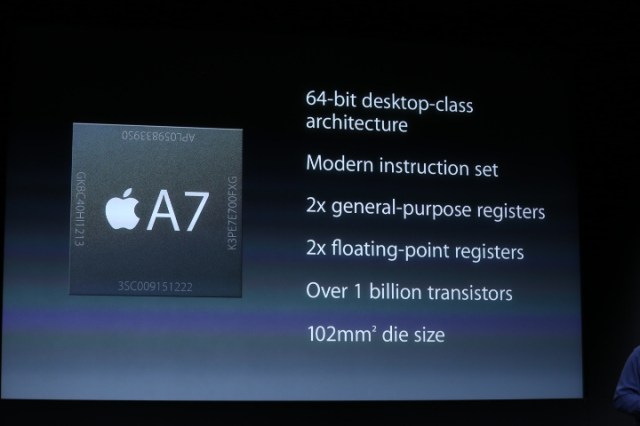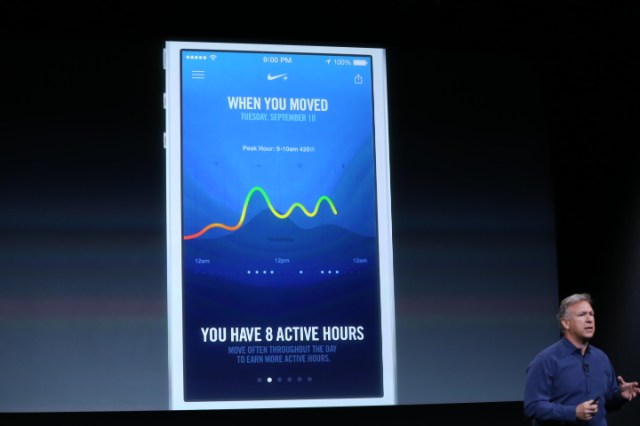The Mercedes S-Class has been the flagship of the German automaker’s sedan lineup since the early 70’s. It’s a car that provides the finest technology that the company has to offer with powerful engines, safety advancements and creature comforts often making their first appearance in any mass-produced vehicle.
The Mercedes S-Class was the first passenger car to introduce airbags to Europe. It popularized anti-lock braking, electronic stability systems and impact crumple zones. It continues to promote new technology with things like infrared night vision and self-driving systems. As the top-end car in Mercedes’ lineup it has the margins and luxury audience to be an ambassador for the brand and for the new technology that wouldn’t be available in low-end models or to other manufacturers for some time.
The iPhone 5S is Apple’s Mercedes S-Class. It features technologies that spell out the future of both Apple and other companies like Samsung that take many of their cues from the iPhone.
iPhones have always been ambassadors for technologies that then made their way out to the general market. Not necessarily always firsts, but executing well and proving their desirability. And, with their ubiquity, making them must-have watermarks for other manufacturers. Retina-quality screens, capacitive touch, no physical keyboards, a great camera — the list of technology or technical concepts that have ‘trickled down’ from the iPhone to the rest of the market goes on.
Now, Apple has its own new model to trickle its technology down to: the iPhone 5C.
The iPhone 5C of today is essentially an iPhone 5 with a few upgraded components. But its desirability lies in a completely different arena than the iPhone 5S. We’ll talk more about that later. What it does offer, though, is a way for Apple to capitalize on the technology that it’s pioneered in the past and the manufacturing pipeline it already has in place to offer a lower-cost yet high-margin iPhone to the masses.
It seems likely at this point that this will be Apple’s strategy going forward. No longer will it pioneer technology only to see competitors take advantage of how cheap and ‘reasonable’ Apple made it seem. It is now Apple to funnel that tech into a device that is just good enough to appeal to millions of new customers, many of which will never need to drive a high-end luxury vehicle. To stretch the analogy a bit, the iPhone 5C is Apple’s ‘C-Class’, a Mercedes for the masses.
It’s a wallet, a game console, a wearable device
But the trickle-down benefits of the iPhone 5S don’t stop at making the mid-line iPhones a more attractive buy for the next model year. There is also a host of very interesting testing going on inside the new flagship.
The new iPhone features a fingerprint sensor which, from early reports by our own staff on the scene, seems quick and easy to use. As I remarked on our TC panel yesterday, including a fingerprint sensor on the iPhone 5S seems like a brilliant way to make people familiar and comfortable with the concepts of fingerprint recognition in preparation for making it much more capable.
Back in June of 2012, Apple introduced Passbook and I noted that getting people to familiarize themselves with a wallet-like interface that held (second-party) money was a great way to build trust. Apple already holds a great deal of that by making the iTunes Store an easy place to buy media and apps. But Passbook was its first attempt to go ‘out of network’ in a big way. To set up your iPhone as a place to pay for all kinds of stuff.
The fingerprint sensor is ‘boiling the frog’ in a similar way. Yes, it’s starting out as a way to unlock your device and pay for things ‘in-network’ to Apple. But the ability to expand that once you’ve built familiarity with it cannot be understated.
And if you couple that with Passbook or another payments API, while keeping the fingerprint data cordoned off in an encrypted store of the A7 chip, you’ve got yourself a wallet. And, when the time comes, that system can be trickled down to the ‘iPhone 6C’ or what have you.
In addition to the fingerprint sensor, the iPhone 5S also has a custom-built A7 processor. It’s a 64-bit unit, which has raised a lot of eyebrows because current users of the iPhone won’t see a whole lot of benefit from moving to the new architecture just yet. But, if you think of it in terms of products outside the iPhone family it begins to make more sense.
In addition, Apple has stopped referring to the graphics processor in the iPhone 5S by its PowerVR designation. PowerVR is the company that has built the graphics component of Apple’s SoC since the first iPhone. But this year, Apple’s documentation refers not to the PowerVR name but to an ‘Apple A7 GPU’.
Obviously, alarm bells should be going off right away, as Apple’s chip efforts have been under the watch of Bob ‘special projects’ Mansfield.
From what we understand, this ‘A7 GPU’ is not a custom Apple-built part — but owning the name is very much in preparation for a move that way in the future. We’ll likely hear more about the GPU once the iPhone reviews start rolling in but a PowerVR Series6-based unit is one possibility.
Indeed, it makes a ton of sense for Apple to move all of its chip design in-house in order to get the best performance out of the radios, processors and other silicon.
The iPad, which is very gaming-friendly already, would benefit from increased memory and a 64-bit chip quite readily. But the real benefits will likely come when Apple begins using these 64-bit processors in products like the Apple TV.
If you think of the Apple TV as a game console in waiting, a custom GPU, 64-bit processor and a bunch of memory starts to make a lot of sense. For now, that’s not happening. But the iPhone 5S is setting the stage for devices to come. Apple is thinking forward with the A7, rather than just producing something that’s good enough for this generation, which is great to see.
And lastly we have the M7 — a dedicated motion processing chip. Essentially a bundle of sensors that can be operated independently of the iPhone’s main processor in order to save power. If you don’t immediately think of this chip as an ideal brain for a wearable device then you haven’t been paying attention.
The M7 and the new A7 processor both feel like Mansfield’s purview. And Mansfield and ex-Adobe CTO Kevin Lynch are rumored to be working on something at Apple — something that may have required the hiring of Nike+ guy Jay Blahnik. And what did Apple happen to demonstrate to show off the M7? A Nike+ Move app, an activity monitor that essentially turns your iPhone 5S into a Fuelband.
Indeed, the iPhone 5S is already a wearable computer — or at least a testbed for one. The technology that could power your Apple wrist computer is shipping this month.
Trickle down
I don’t think that this cascading structure for iPhone technology is coincidental or short-lived. This is the new pattern for iPhone releases going forward. Apple will pioneer new technology in the flagship model, pushing various areas of its chip and fabrication business forward. It will then utilize the established supply and manufacturing resources for that product to craft less expensive and higher-margin models that can be marketed younger.
It’s already commoditized this technology for other makers for years, why not for itself?



